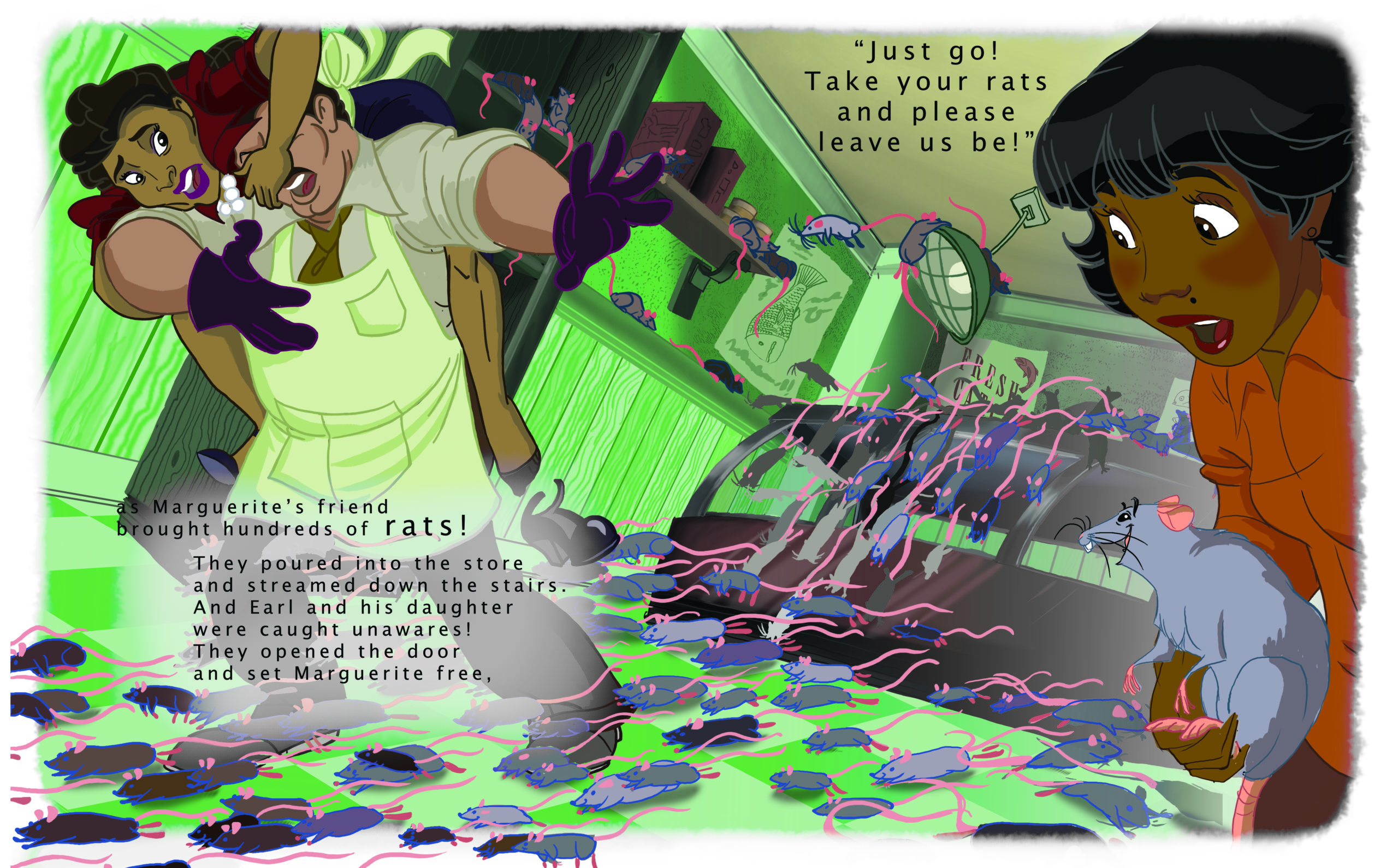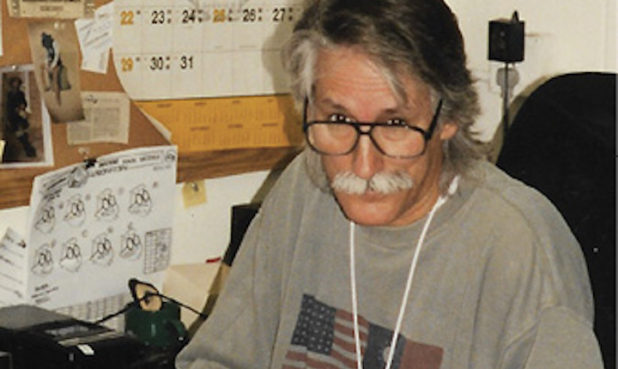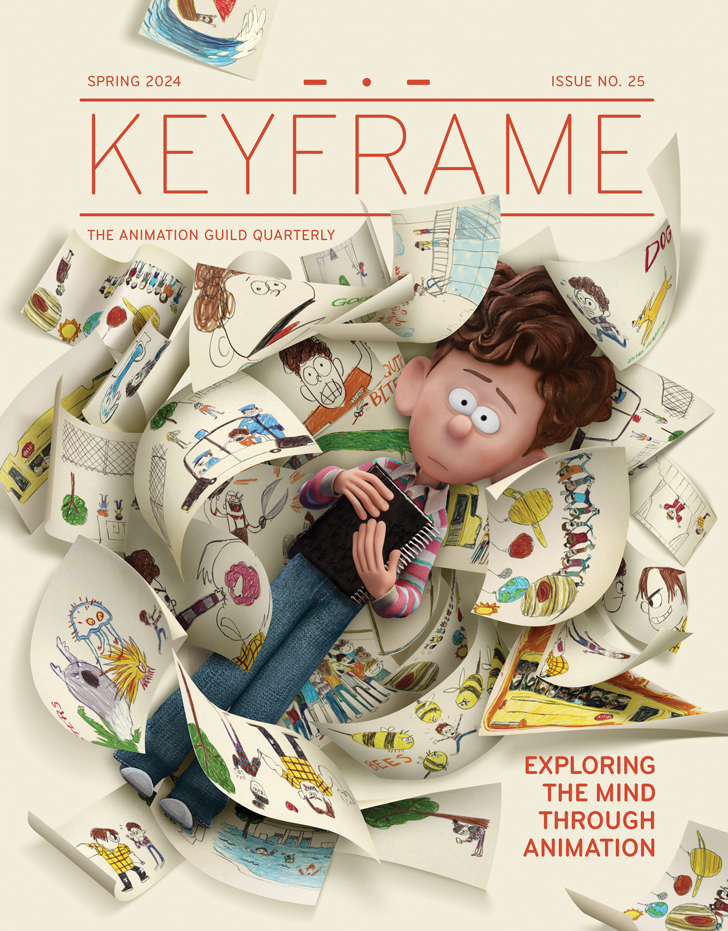
When an email popped up in Carole Holliday’s inbox in 2020, informing her she was the winner of the Black in Animation Lifetime Achievement Award, she almost deleted it as junk mail. “Who’s going to honor me with a lifetime achievement award?” she wondered, believing that her roles in the animation industry have been out of the spotlight. “So when I found out that my peers noticed me, I was like George Bailey, surprised … but very happy.” The award “was like a shot in the arm to say don’t give up.”
In fact, Holliday’s career is an example of staying the course, and she has many strings to her bow: animator, story director, training animator, character designer, and children’s book writer and illustrator—to name just a few.
Holliday’s path to animation was not a direct one. Growing up in Los Angeles County, she split time between the homes of her divorced parents. Her super fun mom was her biggest fan and introduced her to art and music. As a child, Holliday doodled and drew, and at one point wanted to be Charles Schulz. However, she also sang, and soon her love of musical theater took over.
Holliday and her sister were bussed to the Westside for school, and she landed a spot at Beverly Hills High. While it was the perfect school for her musical ambitions, being Black affected her opportunities there. At one point, “I auditioned for Elizabeth Proctor in The Crucible … but I was told they wanted me to audition for Tituba the slave, and that was why they had picked the play, so that I could have a part.”
“God wants me in animation… I insisted that was where I was supposed to be.”
She adds, “High school prepared me for the realities of the world, but it didn’t deter me from it.”
Broadway ambitions landed Holliday at CalArts, studying theater. They also put her in close proximity to its animation department, where she began making friends. At the end of her first year, Holliday became a Christian and felt a need to change her study path because she was concerned it might compromise her faith. She went to the head of the animation department and said, “God wants me in animation.” He replied, “But you can’t draw.”
“I could,” Holliday adds, but just not in the way expected for the animation field. “Even still, I insisted that was where I was supposed to be.” The head of the department sent her away to fill a sketchbook with drawings of people. For a month, Holliday kept returning until he finally said, “You still can’t draw, but we’ll let you in on your enthusiasm.”
During one summer while she was at school, Holliday got her first paid job in animation at Hanna-Barbera working on The Smurfs. Her task was to photocopy rough character designs and then white out the extra lines. One day Storyboard Artist Mitch Schauer asked if she could draw like Jay Ward. Despite having no idea who that was, Holliday immediately said yes. “I just drew the tightest, cleanest lines I could possibly do and fortunately, my style was close enough to what he wanted,” she says. As a result, Holliday was moved on to design characters for Star Fairies and Pound Puppies.

While she was at CalArts, Don Hahn, then a production manager at Disney, looked at her portfolio; he told her she was good and that she needed to do more life drawing. Holliday says she only heard the “you’re good” part of his statement and kept wondering why they didn’t hire her. Upon learning from Glen Keane that he’d filled up five sketch pads after his portfolio had been reviewed, she realized she had more drawing to do. She filled up seven, submitted the best work, and was eventually hired as a training animator on Oliver & Company.
After a stint at Ralph Bakshi, she returned to Disney to work in her previous role, this time on The Little Mermaid. While there, she was called away to trace photostats for Glen Keane. She worked on a few pieces in scenes he had animated, to help him speed up his workflow. While doing this basic task, she began to understand movement and depth as it applied to animation. She soon went back to her job as a training animator where she received conflicting opinions: “One was: Carole will not be an animator. The other was: Carole just needs help.”
Another animator was assigned to mentor her, but her real progress came from the training program she created for herself, working on figure drawing and animating a self-boarded sequence. At the end of three months, her work was reevaluated and the review board questioned her drastic improvement in such a short time. She says they asked her mentor if he had done the work for her, Holliday explains, “and he told them no, he’d been swamped. I didn’t get a promotion and was asked to do more testing.”
Holliday left Disney again, but soon came back, eventually working on The Little Mermaid TV series as a character designer, where director Kevin Lima asked her to do a design during her lunch break. Holliday did a quick drawing that would become the much-loved Roxanne from A Goofy Movie, and she was hired as a character designer and storyboard revisionist on the film, which took her to Paris, her favorite city.
Upon returning to the U.S., she continued working with Lima, this time on Tarzan. She would be there for the duration of the movie, a project she’s proud of, she says, probably because it was one of the hardest she’d worked on.
Holliday credits part of her success to her willingness to leap at every opportunity that’s offered, but she says the biggest challenge in her career has been getting a lead role. In 2007, she took time off from Disney to follow her passion and direct a live \-action short, Witt’s Daughter, which won Best Narrative Short at the 2009 GI Film Festival. She emphasizes that while she loves getting paid to create art, being able to express herself in her own creative projects is especially important, and she is most proud of her film, her Christian weight loss book, The Food Ain’t the Problem, and her book for children, Fish Out of Water.
More recent work includes Sofia the First, Elena of Avalor, and Spirit Riding Free, and these days Holliday freelances while looking for a full-time gig and developing her own projects. “Dreams take time to happen,” she says, and while many of hers have come true, she’s still dreaming of achieving much more.







.png)